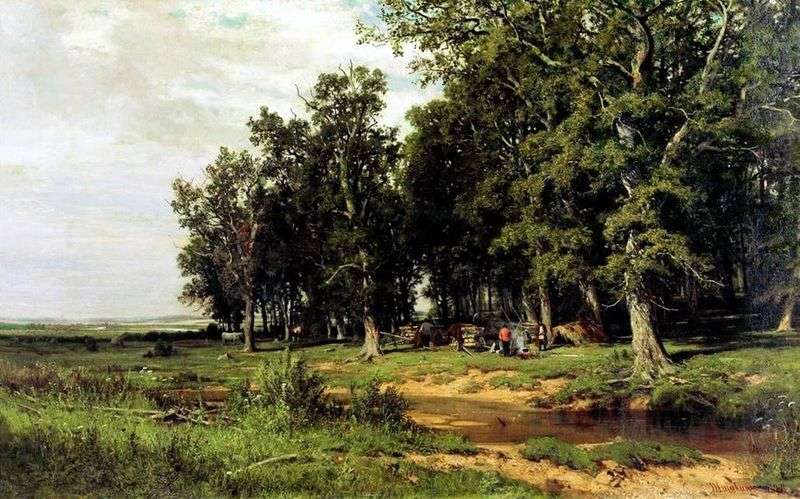
The collection of the Kazan museum of works by Ivan Ivanovich Shishkin gives a vivid idea of the artistic heritage of the outstanding landscape painter, the features of the figurative structure of his works in different periods of creativity, conquering the craftsmanship of his brush and cutter. The canvas “On a mowing in an oak grove” is distinguished by a special expressive power, scope and power of an image.
It belongs to the number of those famous paintings by Shishkin, which earned him the glory of the founder of the epic Russian landscape, the singer of the vast expanses, the unremarkable distances, the mighty forests that make up the beauty of his native nature. Already the object of the image – the oak grove – makes it possible to create a monumental work, but the artist by plastic means enhances the heroic sound of the natural motif.
He chooses a low point of view, allowing to enlarge the scale of trees: emphasizes the contrast of the horizontal plans of the fields running away with the verticals of the trunks of age-old oaks; strives to generalize the form, avoiding unnecessary detailing of the image. The monumentality of the image of nature is facilitated by the reception of fragmentation of certain details of the picture.
Thus, the branches of the tree in the foreground go beyond the canvas, which enhances the impression of the violent scope and power of the forest giant. The painting was painted by the artist on the basis of the sketch and etude material collected during the trip to Epabuga in 1871. As usual, II Shishkin, she depicts a specific place, being an exact “portrait” of a certain area. This is evidenced, in particular, and the original title of the painting “Oak Grove near Yelabuga.” Among other works of the artist, it was acquired by the merchant of the 1st Guild, who became a famous breeder, PK Ushkov, with whom Shishkin was associated with friendly relations.
During the revolutionary period, the picture disappeared from the field of vision and only in 1926 was discovered in the attic of the building of the plant of management of the Bondyuga chemical plant and at that time the museum department of Tatnarkompros was transferred to the Kazan museum.
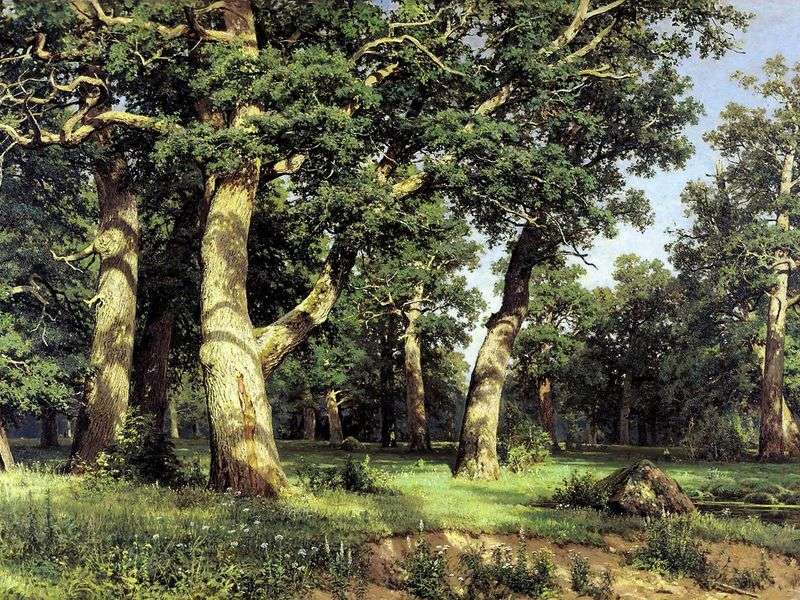 Oak Grove by Ivan Shishkin
Oak Grove by Ivan Shishkin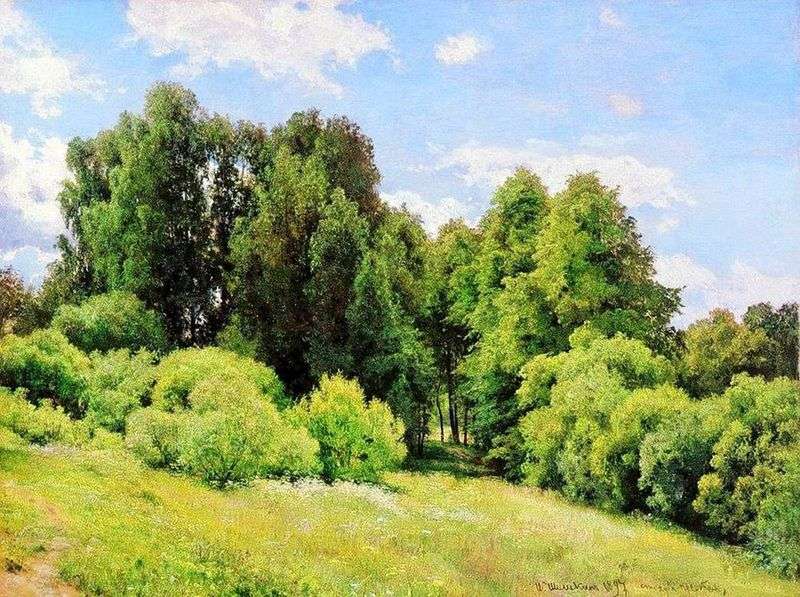 Forest glade (Polyanka) by Ivan Shishkin
Forest glade (Polyanka) by Ivan Shishkin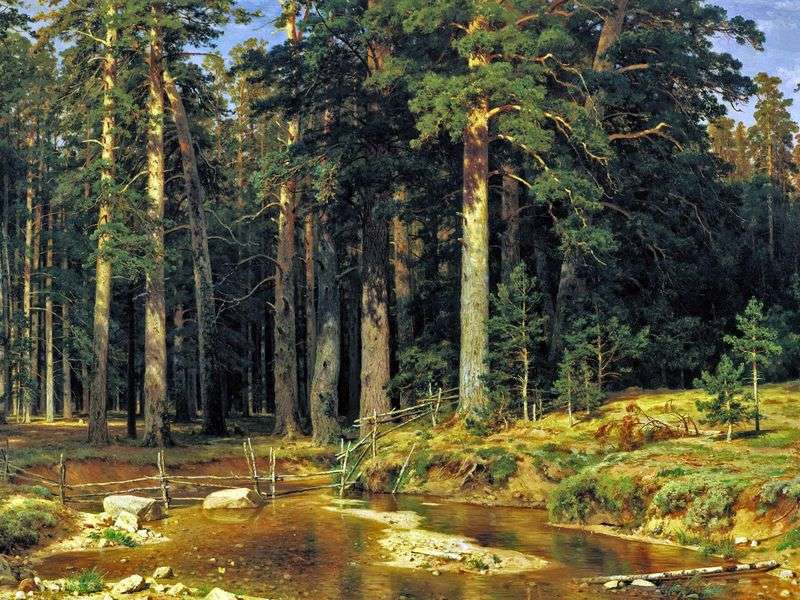 Ship Grove by Ivan Shishkin
Ship Grove by Ivan Shishkin Birch Grove by Ivan Shishkin
Birch Grove by Ivan Shishkin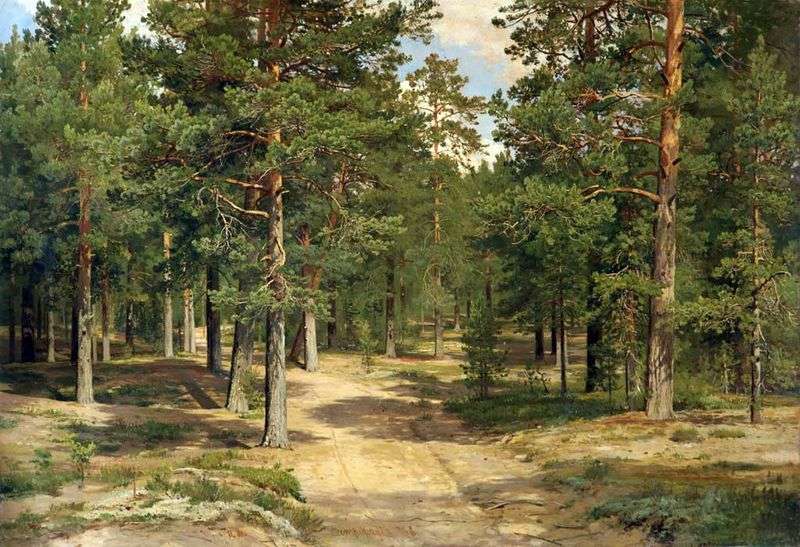 Sestroretsk Bor by Ivan Shishkin
Sestroretsk Bor by Ivan Shishkin Pines, illuminated by the sun by Ivan Shishkin
Pines, illuminated by the sun by Ivan Shishkin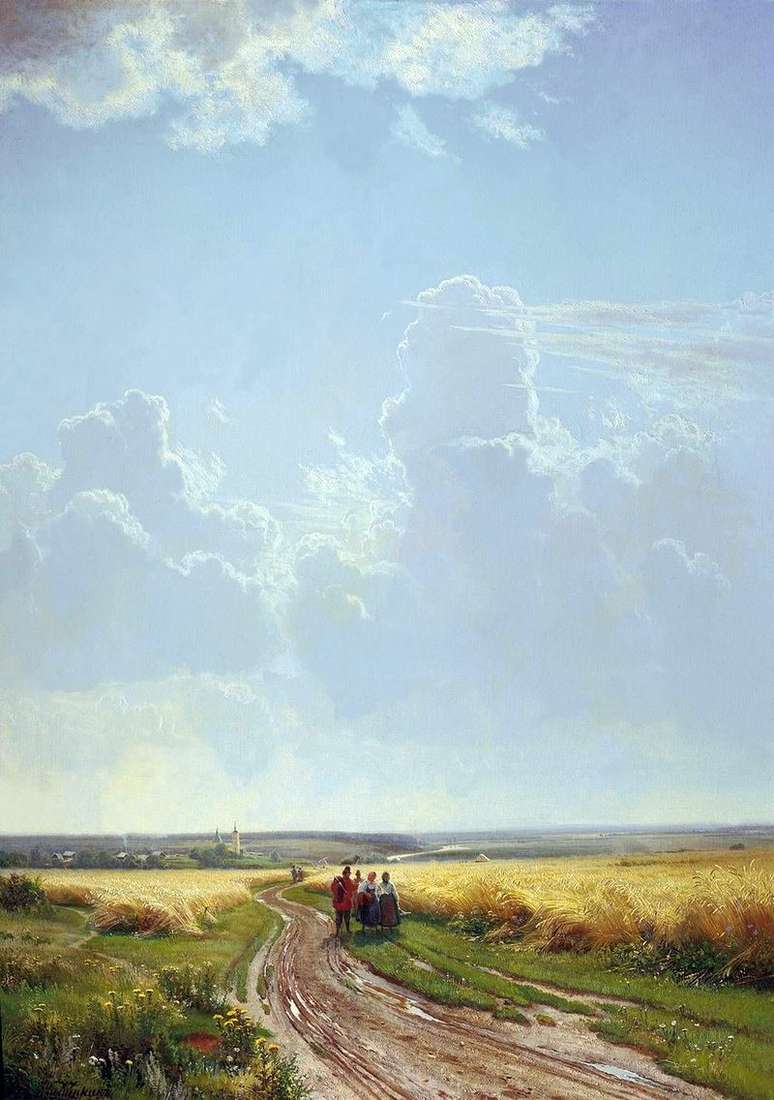 Noon. In the vicinity of Moscow by Ivan Shishkin
Noon. In the vicinity of Moscow by Ivan Shishkin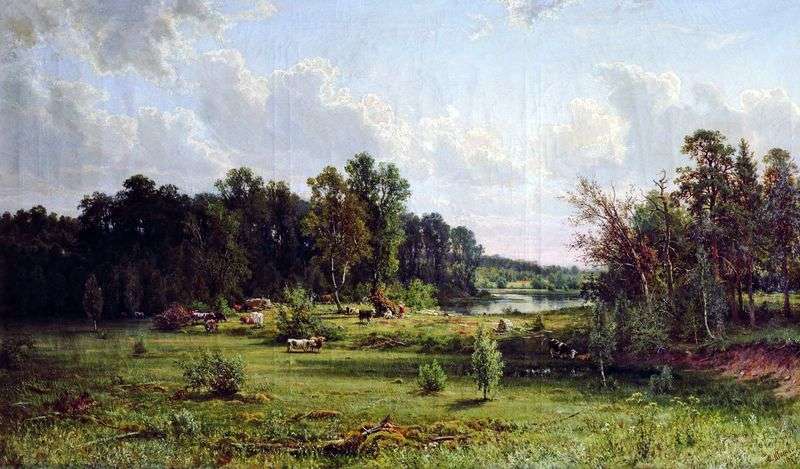 Coppice (Midday) by Ivan Shishkin
Coppice (Midday) by Ivan Shishkin